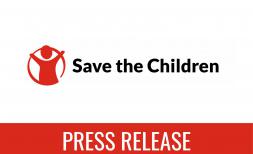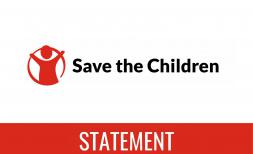School meals off the menu for children in Sri Lanka as economic crisis bites

All of the one million children receiving free school meals in Sri Lanka – or one in four students in the country – could go hungry after government funding was cut as food prices skyrocketed, Save the Children warned today.
Sri Lanka is in the grip of an unprecedented economic crisis, which has seen the government’s 2022 federal budget slash funding for school meals by two-thirds to 2 billion rupees from 6 billion rupees (about. USD6.1 mln from $18.5 mln) – enough to only keep children fed for one school term at most.
Many schools have already stopped serving meals due to the surging cost of basic food items, leaving many families struggling to feed their children amidst a backdrop of food price hikes and nationwide rations on basic goods. The prices of food items such as rice and oil have risen by up to 195% over the past month.
Save the Children is working with the government to provide meals to students in 850 schools across the country by distributing food commodities to complement the school meal programme. However, more than half of the schools have stopped serving meals due to a lack of government funding amidst the economic crisis.
The school meals scheme aims to guarantee a nutritionally balanced meal to vulnerable children across the country in an effort to combat stunting and malnutrition and boost school attendance and educational performance.
The schools that are still serving meals have had to significantly cut back on the size and protein density of the food. Before the crisis, a typical school meal consisted of a balanced diet of meat or eggs, rice, and fruit and vegetables. Now, children are receiving meals consisting mainly of carbohydrates.
“I really enjoy the meals they give us in the morning. They used to give us a whole egg, which reduced to half, and now we don’t even get that,” said 9 year-old Hansi* from Sri Lanka’s Ratnapura District.
Hansi’s mother, Sanju*, is also feeling the effects of the school meal cuts at home. Sanju explained that the free meals meant she could save money on the family’s grocery bill, which has increased by 50% since the start of the crisis.
“The school meal programme is very helpful for me and my children. I don’t prepare lunch at home usually, so my children eat this for breakfast and it helps them to last until an evening snack,” said Sanju. “I’m scared, how will my children eat or how can they learn now? My husband only has work for 2 months. What will happen after that?”
Almost half of all children in Sri Lanka (42%) were living in poverty before the economic crisis, according to the UN, and a third of children under four were underweight or stunted[1]. Children who are not getting enough nutritious food are at risk of falling behind in their learning or even dropping out of school altogether, Save the Children warned.
R.M.S Ranasinghe is a school principal in Sri Lanka’s Ratnapura District who has seen the positive impact school meals can have on students.
“It was important for me to continue the school meal programme as I noticed that when the meals are provided, the children are learning better,” said Ranasinghe. “After the programme kicked off properly, I noticed more children passing the grade 5 scholarship programme. Now more than 10 (out of 35) kids are passing the scholarship, before we only had around 3-4 children who passed the scholarship exam.”
He continued: “The parents come and tell me, their children don’t eat at home, they come to school and eat. During assemblies, some of the children faint if they don’t have any food. I worry that children if the school meals programme is cut further down, children will slowly stop coming to school- it’s a big incentive for them to come.”
The Sri Lankan government is calling on the private sector, international organizations and key stakeholders to make up the shortfall in funds.
Julian Chellapah, Save the Children’s National Director in Sri Lanka, said:
“For many children from poor families, a school meal is much more than just a plate of food – it could be the only proper meal they eat in a day, a meal to get them nourished through the school day. This crisis has sent the price of goods through the roof, and many struggling families are finding it even harder to put food on the table.
“If we don’t keep the school meal programme going, we could soon see a situation where we aren’t just talking about hungry children but dangerously ill and malnourished children, which could have severe consequences on school attendance. We could see a situation where more and more children drop out of school. We’re at risk of taking a huge step backwards on child nutrition and education in Sri Lanka, which would be an absolute tragedy.”
Save the Children is distributing food to vulnerable families in eight districts of the country, to ensure children and their parents have access to nutritious meals despite the country’s economic crisis. In 2021, Save the Children provided school meals to more than 200,000 children.
Notes to editor:
- In January, the Sri Lankan government announced its federal budget for 2022, which revealed reduced spending for school meals by two-thirds – from 6 billion rupees [approx. USD $18.5 mln] to 2 billion rupees [approx. USD $6.1 mln]
- More than 1,081,900 primary grade children are eligible for the free school meals this year. All of these students are at risk of missing out on the free meals this year.
- Sri Lanka as about 4.2 million students across the country, according to UNICEF: Situation Analysis on the effects of and Responses to COVID-19 on the Education Sector in Asia.pdf (unicef.org)
[1] Multi-dimensional poverty Indicator report, 2020, UNDP
*******************************************************************************************************************
For further enquiries please contact:
- Samantha.halyk@savethechildren.org / +44 74235 19077
- We have spokespeople available.
- Our media out of hours (BST) contact is media@savethechildren.org.uk / +44(0)7831 650409
Please also check our Twitter account @Save_GlobalNews for news alerts, quotes, statements and location Vlogs.




